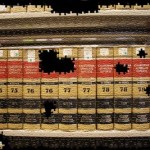There have been some stand out examples of vexatious litigants over the years. You may remember Mr Wilson (the trial by jury guy) or Mr Skyring (the currency guy). My interest was recently piqued when I read an article about an ACT solicitor who was recently declared vexatious.
It all started innocently enough, when, after 5 years of supervised practice, the solicitor decided he wanted to go out on his own. His initial application for an unrestricted practising certificate in August 2008 was declined on the basis that he hadn’t completed the practice management course. It appears he had enrolled in, but didn’t satisfactorily complete the July-August 2008 course. Eventually all the requirements were met and he was granted his unrestricted certificate on 1 July 2009. This was a few months later than he had hoped for. Instead of just getting on with business, he decided to sue the ACT Law Society for the damages incurred by that delay.
Anyway, almost 15 years and 37 (not a typo) sets of proceedings later, he was declared a vexatious litigant by Acting Justice Curtin (see Ezekiel-Hart v The Council of the Law Society of the ACT (No 7) [2024] ACTSC 12). Apart from the appalling facts, the judgment is a very useful summary of the law in relation to vexatious litigants.
It is also an opportune time to explore some of the highlights from the journey.
The Second Proceeding
It was perhaps a sign of things to come when Gray J (in proceedings #2 which were an appeal against the summary dismissal of proceedings #1) observed:
[5] That general pleading sets the tenor for a series of allegations of causing loss to the Commonwealth, discriminatory marking of the plaintiff’s script, discrimination against the plaintiff’s children and wrongful activities with respect to the ACT Vice Presidential Election, amongst other matters.
[6] The pleadings are in a form which readily lend themselves to a description of proceedings that would tend to prejudice or embarrass the fair trial of whatever cause of action might be the subject of them. I must say, on my reading of the pleadings, there is certainly no clearly discernible cause of action on which the claim for damages is based. The drawing of the pleadings in the form that they are presented, in my view, do not reflect at all well on Mr Ezekiel-Hart’s holding of an unrestricted practising certificate.
The Twenty Third Proceeding
Apparently, his drafting skills hadn’t improved by proceedings #23 when Kennett J struck out the plaintiff’s further amended statement of claim and dismissed the proceeding (see Ezekiel-Hart v Council of the Law Society of the ACT (No 3) [2022] ACTSC 300 at [86]). His Honour described the further amended statement of claim as follows:
[22] The FASC is a daunting document. It contains 239 numbered paragraphs spread over 99 pages, followed by 21 paragraphs purporting to identify the relief sought. Further, those figures give only a hint of its complexity. Paragraph 15 contains 323 sub-paragraphs, purporting to be “particulars” (but not purporting to be exhaustive), which are repeated for the purposes of several of the paragraphs that follow. Paragraph 239 then repeats (to what purpose I am yet to understand) paragraphs 14 to 240, although there is no paragraph 240.
[23] More significantly, the FASC presents as a document drafted and settled by a person who has at best a tenuous grasp of legal principle and principles of pleading, and who has such strong opinions about the subject matter as to be incapable of any degree of detachment. It is convoluted, repetitive and conclusory. etc etc [ouch!]
Creative commons acknowledgment for the photograph.
